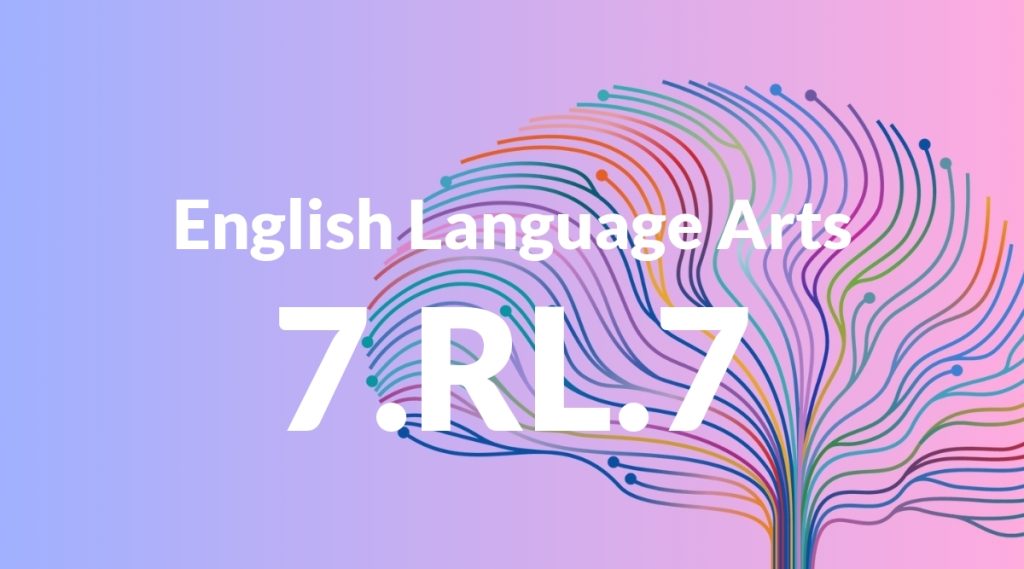Standard: 7.RL.7 – Compare and contrast a written story, drama, or poem to its audio, filmed, staged, or multimedia version, analyzing the effects of techniques unique to each medium (e.g., lighting, sound, color, or camera focus and angles in a film).
Grade level: Grade 7
Subject: English Language Arts
Domain: Reading: Literature
Teacher Overview
This standard emphasizes the importance of understanding how different media can present the same story in unique ways. By comparing and contrasting written works with their multimedia adaptations, students learn to appreciate the techniques specific to each medium and their effects on storytelling. This skill is crucial for developing critical thinking and media literacy. Students should be familiar with basic narrative elements and literary techniques. They should also have some experience with analyzing texts and understanding how different genres function.
After mastering this standard, students will be able to critically evaluate how different media can alter the perception and impact of a story. They will also be able to discuss the effectiveness of various storytelling techniques and their influence on the audience.
Common Misconception 1
A common misconception is that the story remains unchanged regardless of the medium. This is incorrect because each medium has its own set of techniques and constraints that can significantly alter the presentation and impact of the story.
Intervention 1
To address this misconception, provide students with side-by-side comparisons of scenes from a book and its film adaptation. Highlight differences in interpretation, such as changes in dialogue, setting, and character portrayal, and discuss how these changes affect the audience’s perception.
Common Misconception 2
Another misconception is that all multimedia adaptations are inferior to the original written work. This view overlooks the unique strengths and contributions of different media, such as the use of visuals, sound, and performance to enhance the storytelling experience.
Intervention 2
Encourage students to explore successful adaptations and discuss what makes them effective. Highlight examples where the adaptation brings new insights or emotional depth to the story, demonstrating that different media can offer valuable and complementary perspectives.
Prerequisite Knowledge
Students should have a basic understanding of narrative elements such as plot, character, and setting, and be familiar with different genres of literature. They should also have experience with identifying and analyzing literary techniques in written texts.
Subsequent Knowledge
Students will develop advanced analytical skills, enabling them to critically evaluate how different media can alter the perception and impact of a story. They will also be able to discuss the effectiveness of various storytelling techniques and their influence on the audience.
Instructional Activities
- Watch a film adaptation of a novel and discuss the differences in storytelling techniques.
- Read a play and then watch a staged version, noting how performance elements like acting and set design influence the story.
- Listen to an audio book and compare it to the written text, focusing on how sound and voice affect the narrative.
- Create a multimedia project that adapts a written story using different techniques like video, audio, or digital art.




